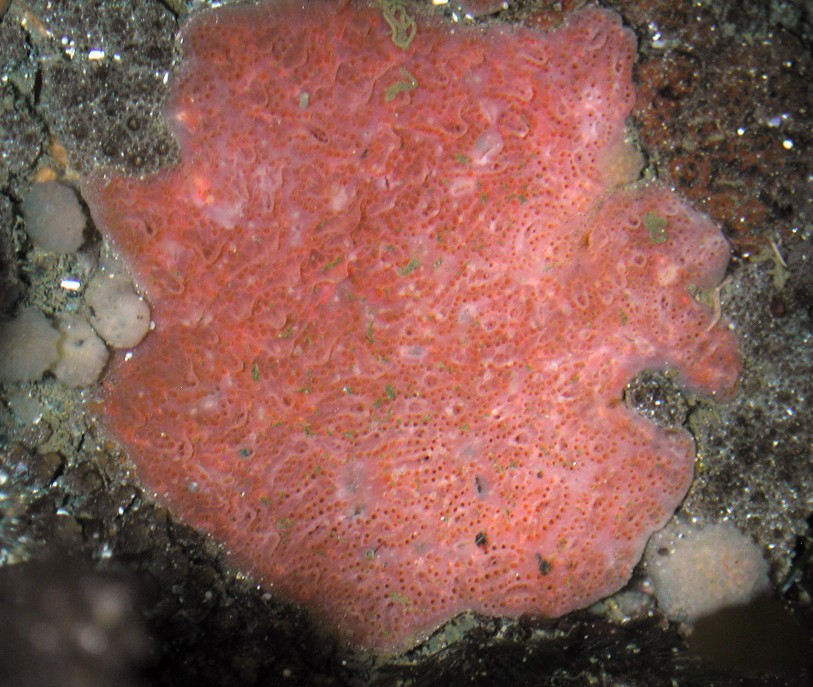How to Distinguish from Similar Species: Aplidium californicum also forms a gelatinous or fleshy colony with zooids in systems but the zooids are tan, yellowish, or orange-brown and usually have less stigmata on the pharynx. Archidistoma molle can be reddish or pink (with red dots) but the zooids are not in systems and the colony tends to be globular in form.
Geographical Range: Southern British Columbia to San Diego, CA
Depth Range: Intertidal to 40 m
Habitat: Rocks and pilings in areas with current.
Biology/Natural History: In California, colonies of this species can grow to 7 cm diameter in 3 months. The larvae are brooded in the atrial cavity in spring and summer.
The symbiotic copepod Arthurhumesia
canadensis may be present inside the zooids. The
amphipod Polycheria
osborni is also a rare symbiont. The
nudibranch Hermissenda
crassicornis
often feeds on the zooids.
| Return to: | |||
| Main Page | Alphabetic Index | Systematic Index | Glossary |
References:
Dichotomous Keys:Kozloff, 1987, 1996
Carlton, 2007
General References:
Harbo,
1999
Kozloff,
1993
Lamb
and Hanby, 2005
Morris
et al., 1980
Scientific Articles:
Web sites:
General Notes and
Observations: Locations,
abundances, unusual behaviors:
Authors and Editors of Page:
Dave Cowles (2008): Created original page
CSS coding for page developed by Jonathan Cowles (2007)
